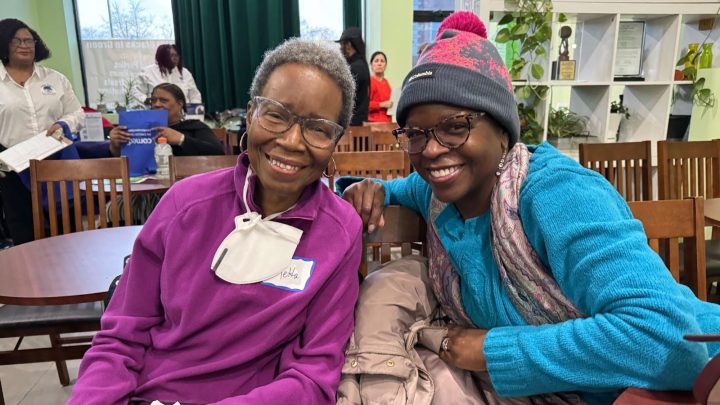
Geothermal energy could be on its way to Chicago’s South Side
Geothermal energy could be on its way to Chicago’s South Side

The Joe Biden administration has the ambitious goal to create a carbon pollution free power sector by 2035. To get there, communities will have to explore all kinds of carbon-free and renewable energy. One of them is deep below the surface of the Earth: geothermal.
In Chicago, a neighborhood has launched a community effort to see if geothermal is right for it, and residents are looking at taking advantage of the city’s trademark alleys to make it happen.
Naomi Davis is the head of the environmental justice group Blacks in Green, based in Chicago. At a community meeting she pitched geothermal energy — power drawn from underground that can heat and cool homes. The hope is that it could make life easier for residents in West Woodlawn, a historically Black neighborhood on the city’s South Side.
The undertaking, Davis said, could lower utility bills, bring green jobs and cut pollution.
“We’re about the business of energy justice,” said Davis. “Which means that we have a campaign to end energy poverty, and we’re not playing.”
Blacks in Green is one of many community partners across the country that was given a grant by the U.S. Department of Energy to design a geothermal pilot program. The task is to create a shared geothermal district networked across four city blocks. It would include more than 150 residential buildings.
Debra Gay and her mom, Retta Ford, live nearby and came with questions.
“Given that our city lots are so tightly spaced, how would you do that for an existing home, and would that create some disruption?” Gay asked.
Ford wondered if the project could affect existing home foundations.
“Because it seemed like you’re taking the water out of the earth under the buildings,” Ford said. “So it would just seem like it would make it unstable.”
Chicago has a unique option to build geothermal that wouldn’t disrupt existing utility lines or private properties, according to consultant Andrew Barbeau. He’s helping build out the pilot project. Chicago’s alleys are key.
“Out in front, you got water, you got gas, you got sewer and other things,” said Barbeau. With the alleys, “there’s nothing under that ground.”
Here’s the plan: Leverage the earth underneath the alleys behind homes and businesses to build out a community geothermal system. That will mean a series of deep, 450-foot holes that pipe water into the ground, absorb the temperature of the earth and then bring it back up to the surface.
Barbeau said the underground heating system will form a giant neighborhood loop and “along the way, connect into each building or everyone who’s participating,” he said
This all works because starting at about 20 feet below the surface of the Earth, the temperature is a consistent 55 degrees Fahrenheit, said Prairie Research Institute Geologist Andrew Stumpf.
“So in the shallow surface, you’re pulling out 55-degree temperature. So circulate water in a pipe and you exchange the heat into the pipe into the water, and you’re pulling that temperature out,” said Stumpf.
Geothermal in Woodlawn is a long way out. Once the community engagement phase wraps up, Blacks in Green will be able to vie for federal funding to actually build the system.
But Stumpf said that in a sense the geology is the easy part. There are bigger questions when the community runs the power system.
“We’re considering, how do people afford these systems? Who would own the systems? How do you actually install it?” he said.
The hope isn’t just to break ground on geothermal but explore new ownership models that center equity along the way.
Back at the Blacks in Green meeting, South Side resident Rosazlia Grillier said energy affordability has been a big issue in this area.
“Prices around energy costs are skyrocketing,” said Grillier. “Utilities are skyrocketing.”
She said the community having ownership in the energy system would be huge. “And so we can either just complain about it or we can educate ourselves about it and make the change that we know needs to happen,” Grillier said.
The more that people know about geothermal, she said, the more likely they’ll be on board.
There’s a lot happening in the world. Through it all, Marketplace is here for you.
You rely on Marketplace to break down the world’s events and tell you how it affects you in a fact-based, approachable way. We rely on your financial support to keep making that possible.
Your donation today powers the independent journalism that you rely on. For just $5/month, you can help sustain Marketplace so we can keep reporting on the things that matter to you.

















